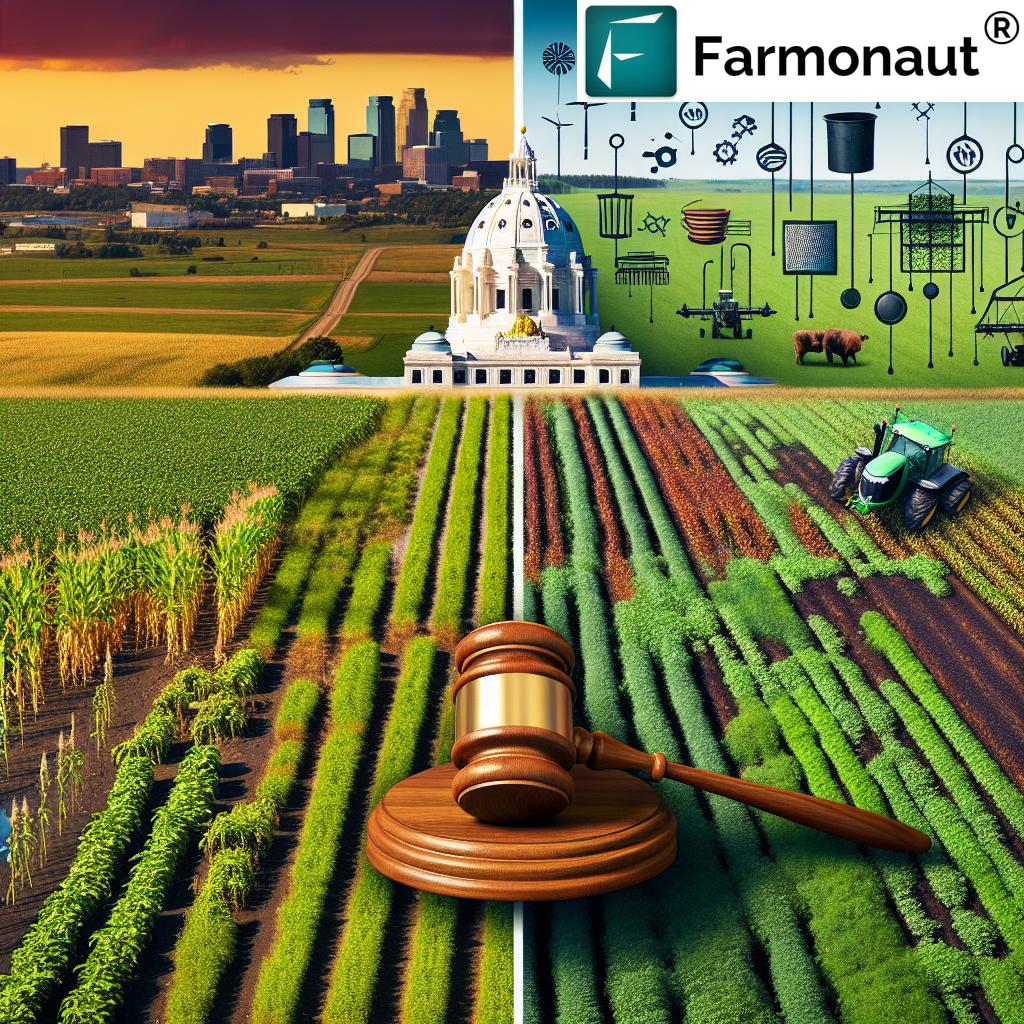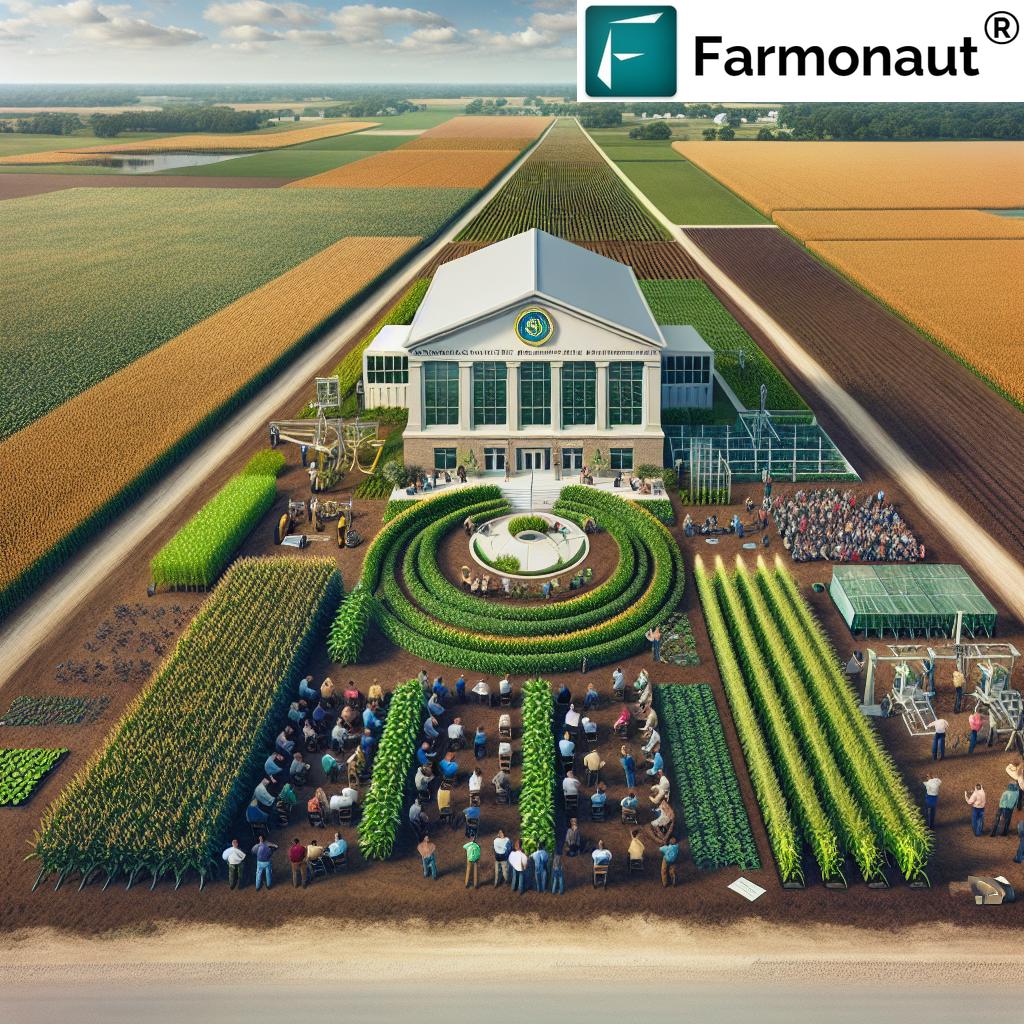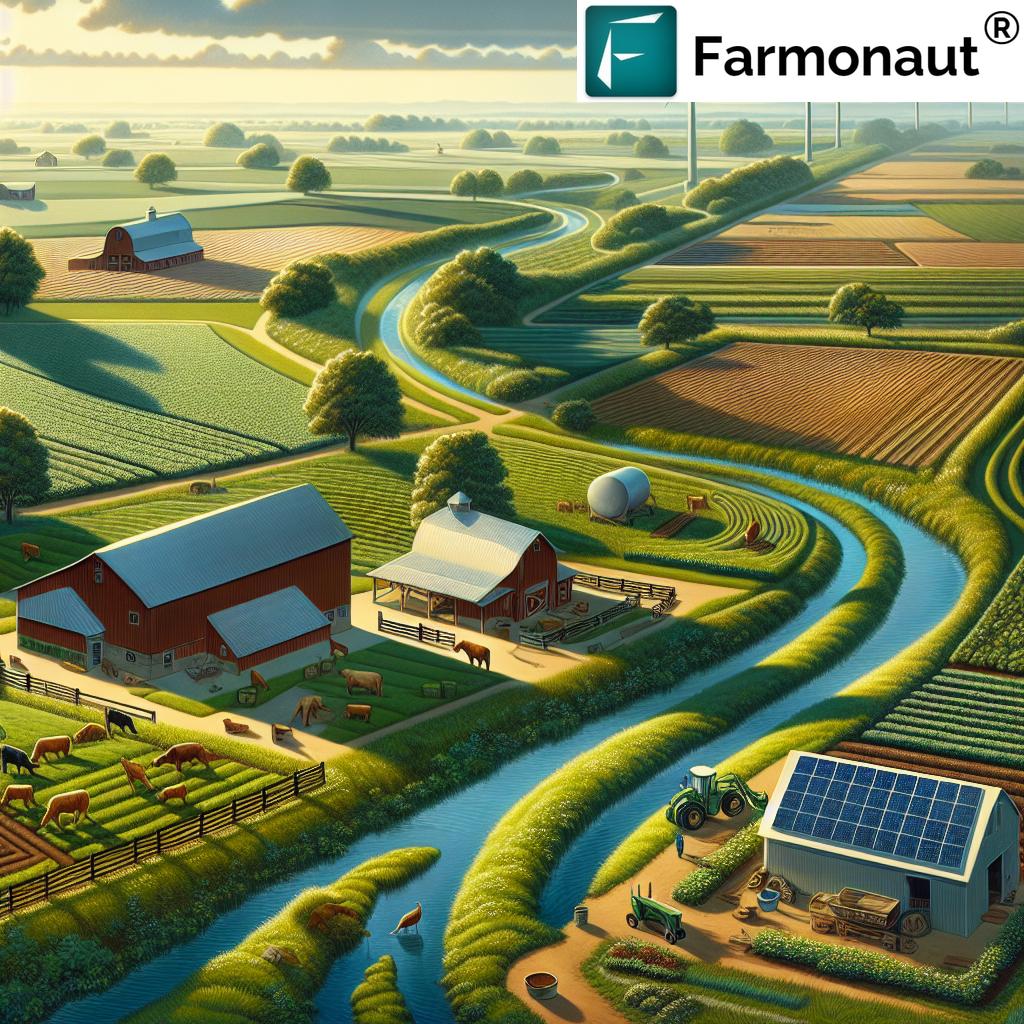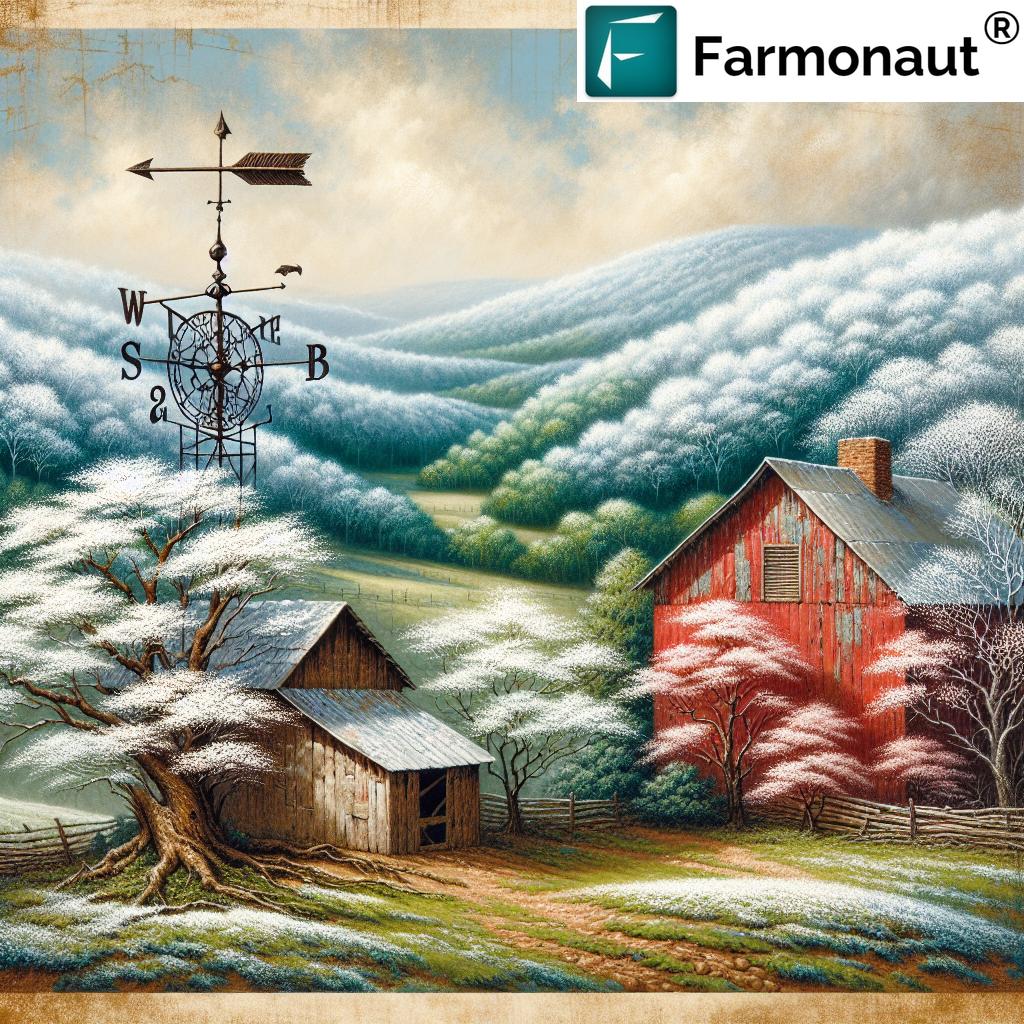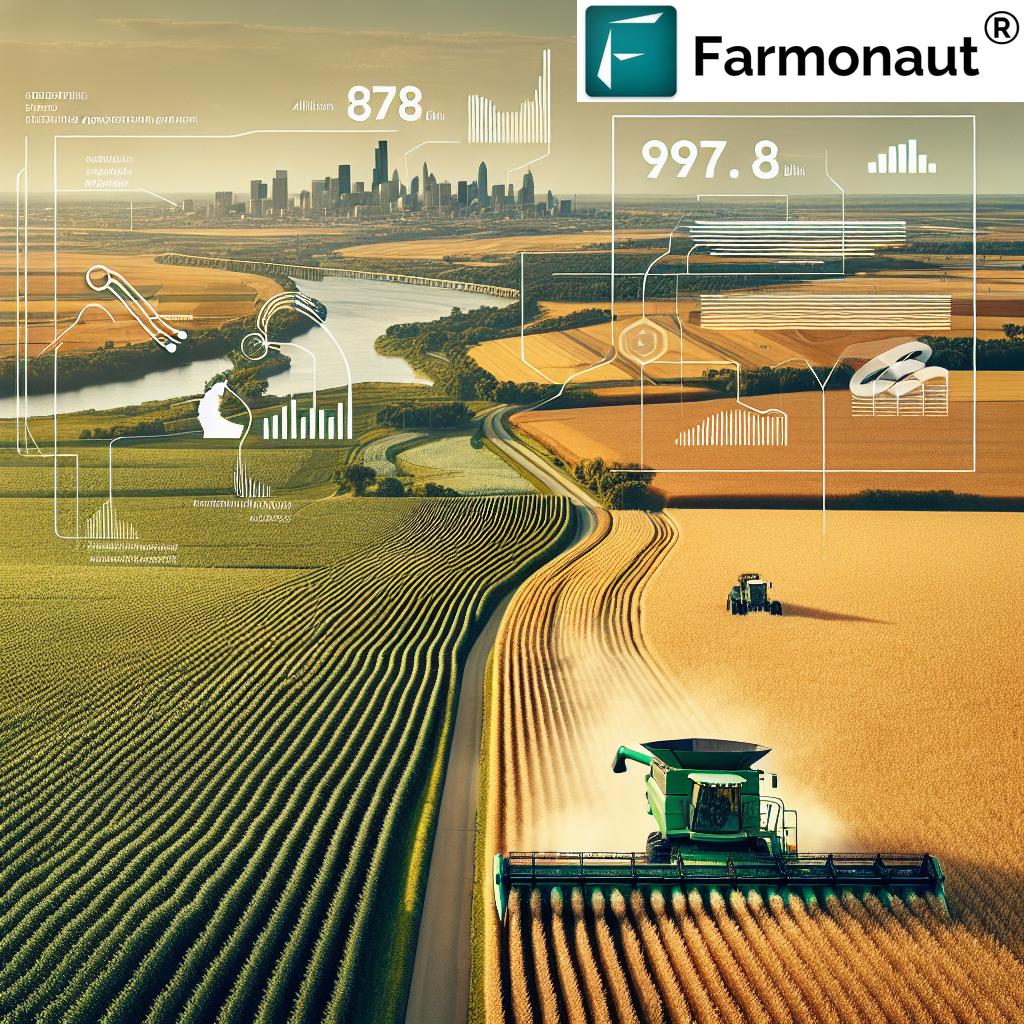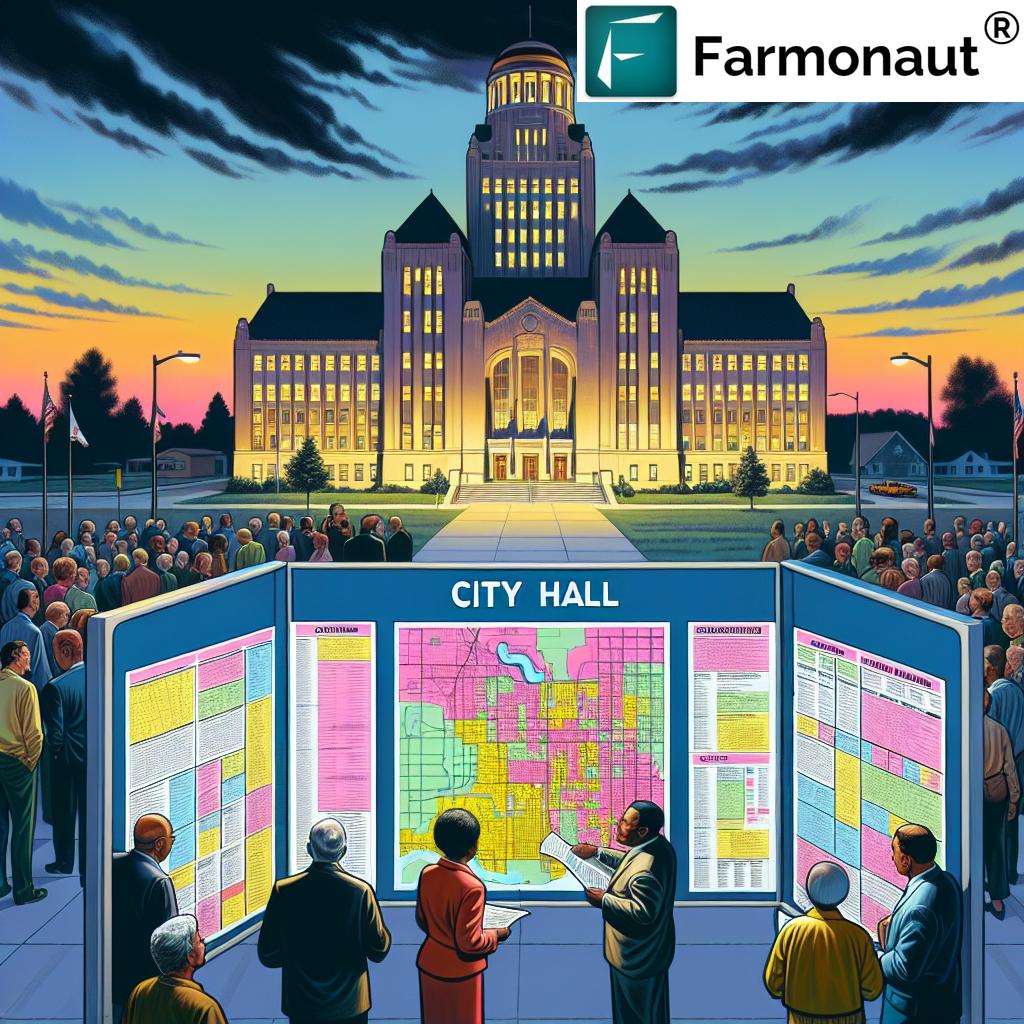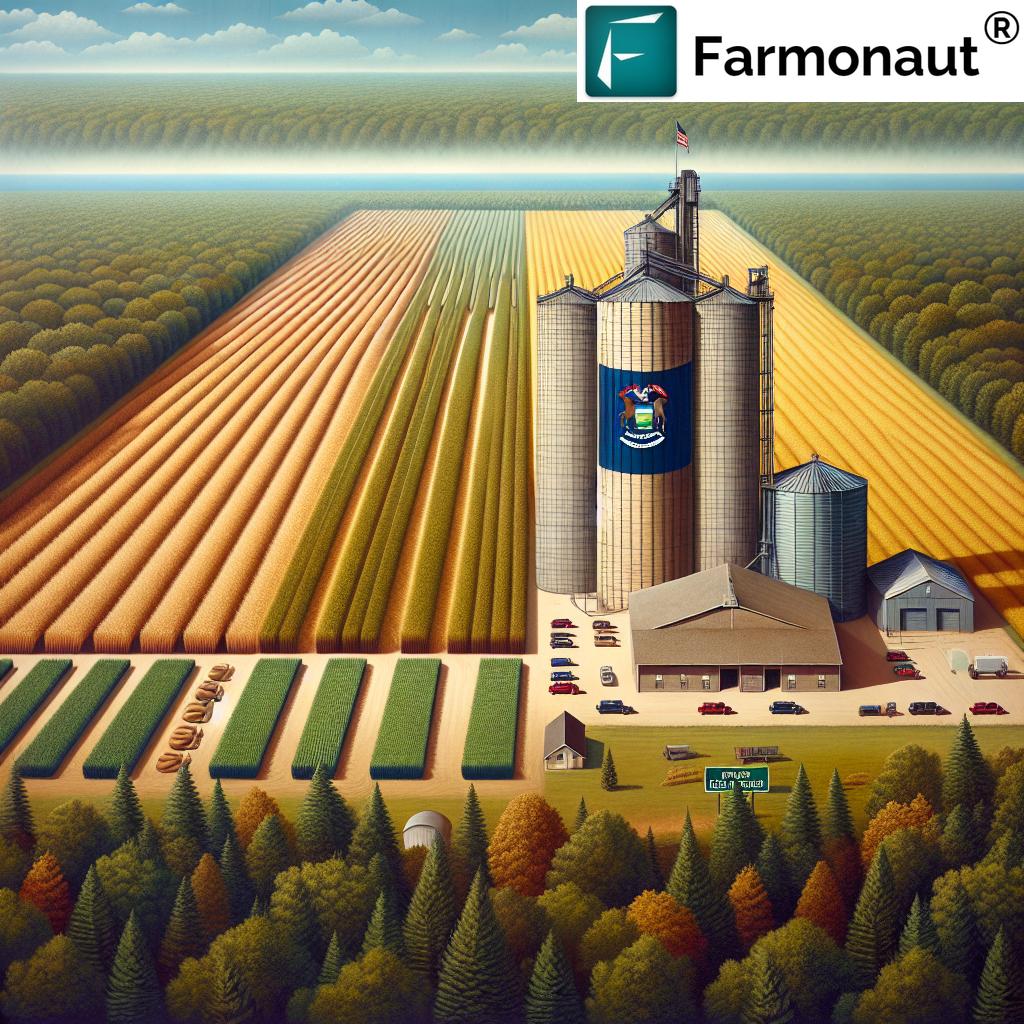Revolutionizing Federal Construction: How Mass Timber is Boosting Sustainability and Rural Economies in the Pacific Northwest
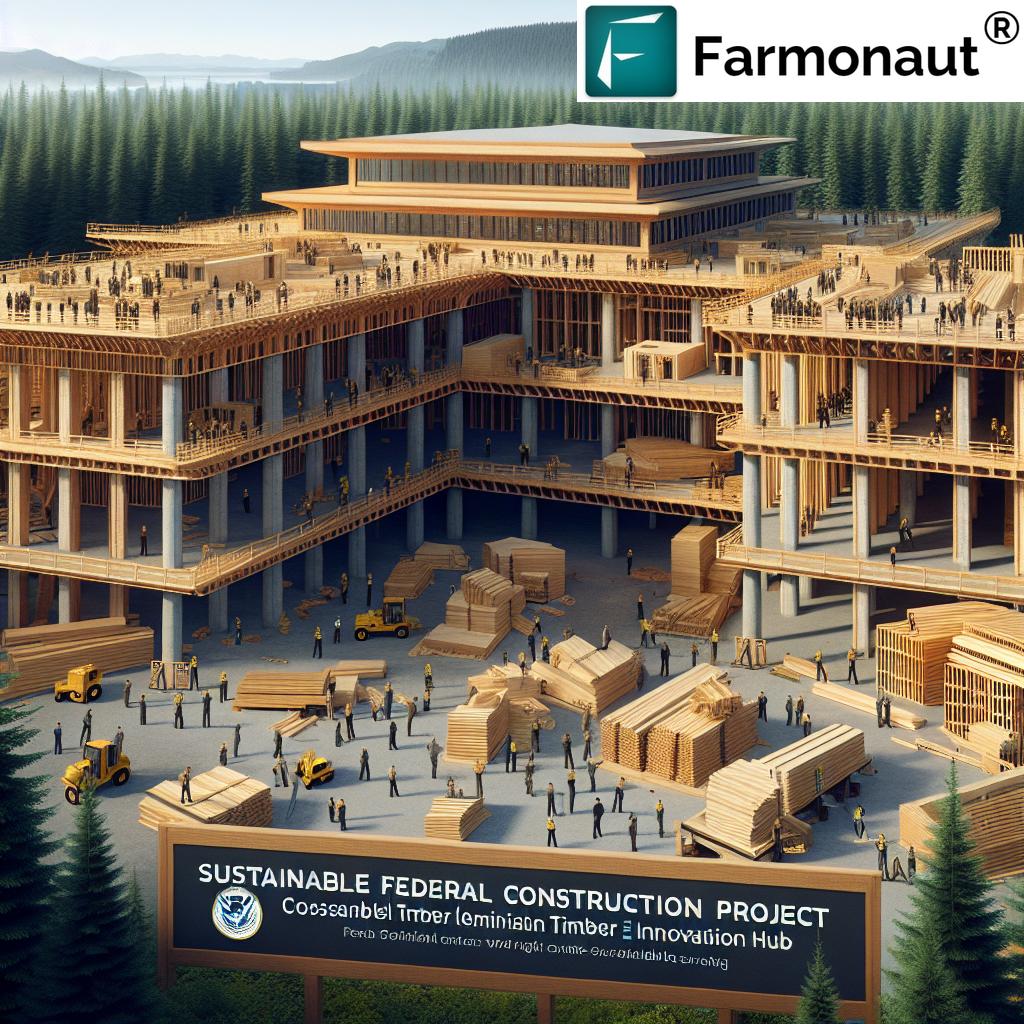
In the heart of the Pacific Northwest, a revolutionary movement is taking shape that promises to transform the landscape of federal construction while simultaneously boosting sustainability and revitalizing rural economies. The catalyst for this change? Mass timber – an innovative and eco-friendly building material that’s rapidly gaining traction in the construction industry.
“The Mass Timber Federal Buildings Act aims to reduce carbon footprints and address housing shortages across 50 U.S. states.”
As we delve into this exciting development, it’s crucial to understand the broader context of sustainable practices in various industries. For instance, in agriculture, companies like Farmonaut are leveraging satellite technology and AI to promote precision farming and reduce environmental impact. While our focus today is on mass timber, these parallel innovations across sectors highlight a growing commitment to sustainability and efficiency.
The Rise of Mass Timber in Federal Construction
The introduction of the Mass Timber Federal Buildings Act marks a significant milestone in the journey towards more sustainable federal construction projects. This bipartisan effort, spearheaded by Oregon’s U.S. Senator Jeff Merkley and Idaho’s U.S. Senator James Risch, aims to promote the use of mass timber in federal building projects and military construction.
But what exactly is mass timber, and why is it garnering so much attention?
Understanding Mass Timber
Mass timber is an engineered wood product created by layering wood panels or planks to form strong, structural components. This innovative material offers numerous benefits over traditional construction materials like concrete and steel:
- Sustainability: Mass timber is a renewable resource that sequesters carbon, reducing the overall carbon footprint of buildings.
- Strength and durability: Despite being lightweight, mass timber is incredibly strong and can withstand significant loads.
- Fire resistance: Contrary to popular belief, mass timber has excellent fire-resistant properties due to its dense composition.
- Speed of construction: Prefabricated mass timber components can significantly reduce on-site construction time.
- Aesthetic appeal: The natural warmth and beauty of wood create visually appealing structures.
The Mass Timber Federal Buildings Act: A Game-Changer
The bipartisan Mass Timber Federal Buildings Act is set to revolutionize federal construction practices. Here’s how:
- Incentivizing mass timber use: The act provides a preference in federal building contracts for mass timber products, allowing mass timber companies to compete for federal construction, renovation, or acquisition of public buildings and military construction projects.
- Promoting domestic sourcing: The bill creates a two-tier contracting preference, with the first tier applying to mass timber made within the U.S. and responsibly sourced from state, federal, private, and Tribal forestlands.
- Encouraging sustainable practices: An optional second tier applies to mass timber products sourced from restoration practices, fire mitigation projects, and/or underserved forest owners.
- Assessing environmental impact: The bill includes a reporting requirement for a whole building lifecycle assessment, providing concrete evidence of the carbon sequestration benefits of mass timber buildings.
As we consider the potential impact of this legislation, it’s worth noting that innovative approaches to resource management are becoming increasingly prevalent across industries. For instance, in the agricultural sector, platforms like Farmonaut are using satellite imagery and AI to help farmers optimize their resource use and reduce environmental impact. While the contexts differ, both mass timber construction and precision agriculture represent significant steps towards a more sustainable future.
Benefits for Rural Communities and the Environment
The Mass Timber Federal Buildings Act isn’t just about construction; it’s a multifaceted approach to addressing several critical challenges:
- Job creation: By promoting the use of mass timber, the act supports job growth in rural communities, particularly in the forestry and wood products industries.
- Wildfire prevention: Encouraging responsible forest management can help reduce the risk of catastrophic wildfires.
- Carbon footprint reduction: Mass timber buildings sequester carbon, helping to mitigate climate change.
- Housing shortage solutions: The efficiency and cost-effectiveness of mass timber construction could help address housing shortages nationwide.
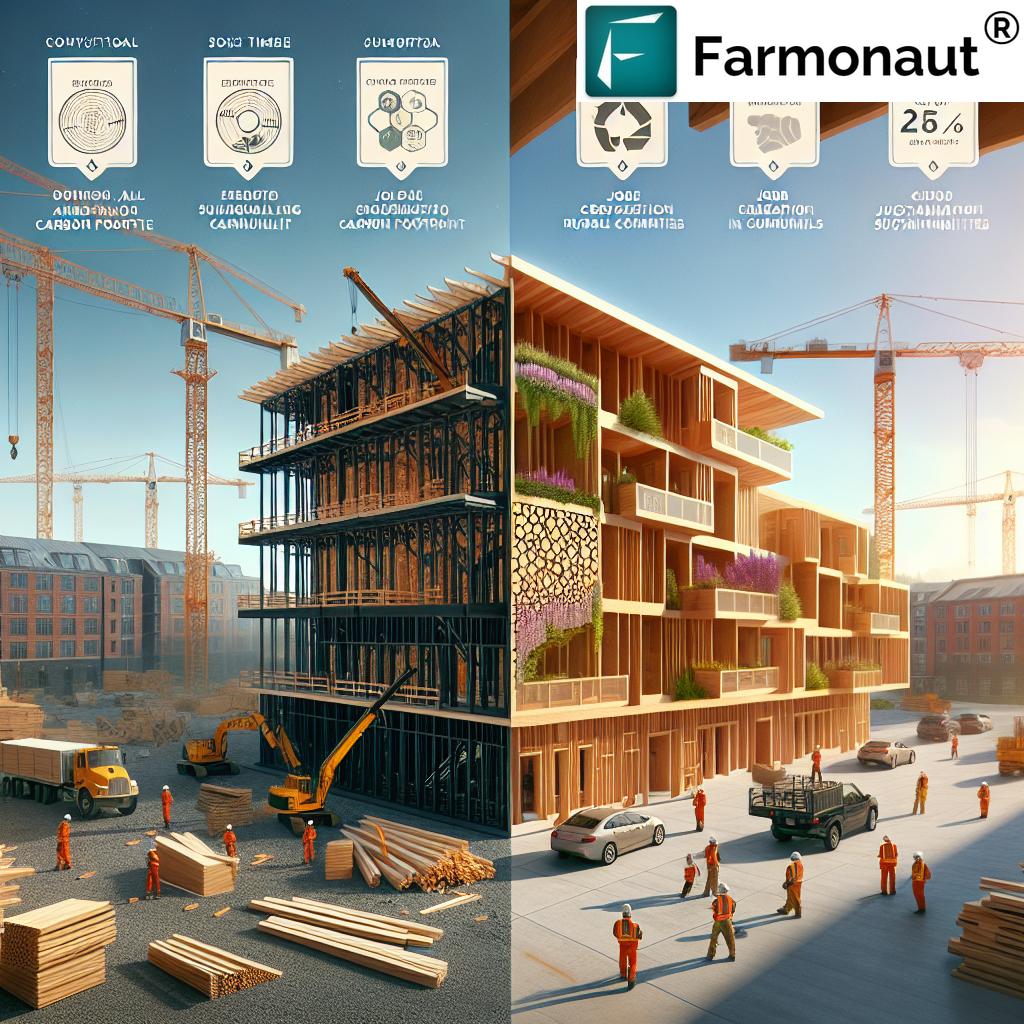
“Mass timber construction can create thousands of jobs in rural communities while promoting sustainable forestry practices in millions of acres.”
Comparative Analysis: Mass Timber vs. Traditional Construction Materials
| Criteria | Mass Timber | Concrete | Steel |
|---|---|---|---|
| Carbon Footprint (estimated CO2 emissions per sq ft) | Low (0.5-1.0) | High (3.0-4.0) | Very High (4.0-5.0) |
| Energy Efficiency (R-value) | High (R-3.5 per inch) | Low (R-0.1 per inch) | Very Low (R-0.003 per inch) |
| Fire Resistance Rating | Good (2-3 hours) | Excellent (3-4 hours) | Poor without treatment (0.5-1 hour) |
| Construction Time (estimated weeks for a typical project) | Fast (12-16 weeks) | Slow (20-24 weeks) | Moderate (16-20 weeks) |
| Job Creation (estimated jobs per $1 million invested) | High (15-20 jobs) | Moderate (10-15 jobs) | Low (5-10 jobs) |
| Impact on Rural Economies | Significant Positive | Minimal | Minimal |
This comparative analysis clearly illustrates the advantages of mass timber in federal construction projects. Its lower carbon footprint, higher energy efficiency, and significant positive impact on rural economies make it a compelling choice for sustainable building practices.
Industry Support and Endorsements
The Mass Timber Federal Buildings Act has garnered widespread support from various industry stakeholders, including:
- American Wood Council
- Sustainable Northwest
- Forest Landowners Association
- National Alliance of Forest Owners (NAFO)
- Weyerhaeuser
- Freres Engineered Wood
- Oregon Forest Industries Council
- Composite Recycling Technology Center (CRTC)
- Oregon iSector
- Washington Mass Timber Accelerator
- Pacific Northwest Mass Timber Tech Hub
- American Forest Resource Council
- Oregon Department of Forestry
These endorsements underscore the broad recognition of mass timber’s potential to transform the construction industry while promoting sustainability and economic growth.
The Role of Technology in Sustainable Construction
While mass timber is revolutionizing the construction industry, it’s important to recognize that technological advancements are driving sustainability across various sectors. In agriculture, for instance, companies like Farmonaut are leveraging satellite technology and AI to promote precision farming and reduce environmental impact.
Farmonaut’s platform offers services such as:
- Real-time crop health monitoring
- AI-based advisory systems
- Blockchain-based traceability
- Resource management tools
While the applications differ, both mass timber construction and precision agriculture technologies share a common goal: promoting sustainability and efficiency in resource use.
The Future of Federal Construction
As we look to the future, it’s clear that mass timber will play an increasingly important role in federal construction projects. The Mass Timber Federal Buildings Act sets the stage for a new era of sustainable building practices that benefit both the environment and rural economies.
Key areas where we can expect to see significant impact include:
- Carbon sequestration: As more federal buildings are constructed using mass timber, we’ll see a substantial reduction in the construction industry’s carbon footprint.
- Rural economic growth: The increased demand for mass timber will create jobs and stimulate economic activity in rural communities across the Pacific Northwest and beyond.
- Innovation in construction: The adoption of mass timber in federal projects will likely spur further innovations in wood construction technologies and techniques.
- Improved forest management: The sustainable sourcing requirements in the act will promote better forest management practices, reducing wildfire risk and improving forest health.
Challenges and Considerations
While the potential benefits of mass timber in federal construction are significant, it’s important to address potential challenges:
- Supply chain development: Scaling up mass timber production to meet increased demand may require significant investment in manufacturing facilities and supply chain infrastructure.
- Building code adaptation: Some jurisdictions may need to update their building codes to fully accommodate mass timber construction.
- Public perception: Educating the public about the fire resistance and structural integrity of mass timber buildings may be necessary to overcome misconceptions.
- Balancing forest use: Ensuring that increased demand for timber doesn’t lead to unsustainable forestry practices will be crucial.
Addressing these challenges will require collaboration between government agencies, industry stakeholders, and research institutions. By working together, we can ensure that the transition to mass timber in federal construction is smooth and sustainable.
Conclusion: A Sustainable Future Built with Wood
The Mass Timber Federal Buildings Act represents a significant step towards a more sustainable and economically vibrant future. By promoting the use of mass timber in federal construction projects, we’re not just changing how we build – we’re investing in rural communities, combating climate change, and fostering innovation in the construction industry.
As we move forward, it’s clear that sustainability will be a driving force across industries. Whether it’s mass timber in construction or precision agriculture technologies like those offered by Farmonaut, innovative solutions are key to addressing our most pressing environmental and economic challenges.
The future of federal construction is bright, and it’s built with wood. As we embrace mass timber and other sustainable building materials, we’re not just constructing buildings – we’re building a better, more sustainable world for generations to come.
FAQs
- What is mass timber?
Mass timber is an engineered wood product created by layering wood panels or planks to form strong, structural components. It’s a sustainable alternative to traditional building materials like concrete and steel. - How does mass timber benefit rural economies?
Mass timber production creates jobs in forestry, manufacturing, and construction in rural areas. It also promotes sustainable forest management practices, supporting long-term economic stability in these communities. - Is mass timber fire-resistant?
Yes, mass timber has excellent fire-resistant properties. Its dense composition allows it to char on the outside while maintaining structural integrity, often performing better in fire tests than steel or concrete. - How does mass timber construction compare to traditional methods in terms of speed?
Mass timber construction is typically faster than traditional methods due to the use of prefabricated components. This can significantly reduce on-site construction time and labor costs. - What is the environmental impact of mass timber?
Mass timber has a lower carbon footprint compared to concrete and steel. Trees absorb carbon as they grow, and this carbon remains sequestered in the wood even after it’s used in construction.
Earn With Farmonaut: Link to Affiliate Program
Earn 20% recurring commission with Farmonaut’s affiliate program by sharing your promo code and helping farmers save 10%. Onboard 10 Elite farmers monthly to earn a minimum of $148,000 annually—start now and grow your income!
For more information on Farmonaut’s innovative agricultural solutions, check out their API and API Developer Docs.











